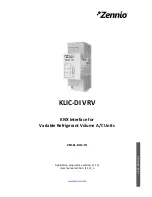
11
Multi-track grade crossings using the
Grade Crossing Pro/2 Expander
For the most realistic, “no operational exceptions” grade crossing behavior you will need one
Grade Crossing Pro/2 Expander
for each additional track beyond the first one. The
Grade Crossing Pro/2 Expander
connects to the
Grade Crossing Pro/2
with a single cable which is included with each
Grade Crossing Pro/2 Expander
. Connect one end of the cable, with the red
stripe aligned to the left edge of the circuit board, as shown in Figure 17a, to the lower 6-pin header on the
Grade Crossing
Pro/2 Expander
board; use the upper 6-pin header to connect any additional
Grade Crossing Pro/2 Expander
boards.
Connect the other end of the cable to the 6-pin header on the
Grade Crossing Pro/2
board; again, align the red stripe to the
left edge of the board as shown. Zoomed in views are shown in Figures 17b and 17c. Please refer to the
Grade Crossing
Pro/2 Expander
instructions for all other details on wiring, switch configuration and setup.
Figure 17a – Connecting the GCP/2 and GCP/2 Expander
Figure 17b – GCP/2 Expander with cable attached
Figure 17c – GCP/2 with cable attached
Troubleshooting – photocell sensing
If your signals do not flash when the sensors are covered or flash all the time you can perform the following tests. First, verify
that you have the sensor mode configured correctly (see Table 2 on page 4). Second, revisit the photocell sensitivity adjustment
process on pages 5. A loose or missing wire connection on a photocell will cause its status LED to stay on all the time!
Troubleshooting – Between-the-rails infrared sensing
If your signals always flash even when no train is present then you will probably see one or more of the red sensor LEDs lit up
on the
Grade Crossing Pro/2
board. You may have the IR components sitting too high. Make sure they are no higher than the
top of the railroad ties otherwise the IR “light” can leak across and be seen by the detector. Also make sure that none of the
detector blue and black wires are touching each other. This would be will be interpreted as an activated sensor.
If your signals fail to flash yet one or more of the red sensor LEDs is lit up then double check the signal wiring. A typical error is
assuming that the common wire connects to ground (GND); it doesn’t! The common wire must connect to the DC terminal
regardless of the color of that wire!
If your signals fail to flash when you cover a particular sensor location then double-check your sensor wiring. A missing sensor
connection (missing wire or open circuit) will be interpreted as a cleared sensor. Verify the glow of the IR emitters using a
digital camera or smartphone camera. Also verify that you have the sensor mode configured correctly (see Table 2 on page
4).
You can determine if the sensor inputs are working correctly by TEMPORARILY disconnecting all blue sensor wires from
the board. If any of the red sensor LEDs are lit then the main chip on the board may be at fault. Contact us for further help.
Otherwise, connect each sensor input (WF, WN, EN, EF) to GND, ONE sensor input at a time. An activated sensor appears
to the board like a low voltage connection so you are, in effect, mimicking an activated sensor with this test. If the sensor’s
associated red LED does NOT come on when you make that temporary connection then you may have a problem with the
board and you should contact us. If the sensor red LED did light up with the temporary connection then you may have a
defective IR detector.






























